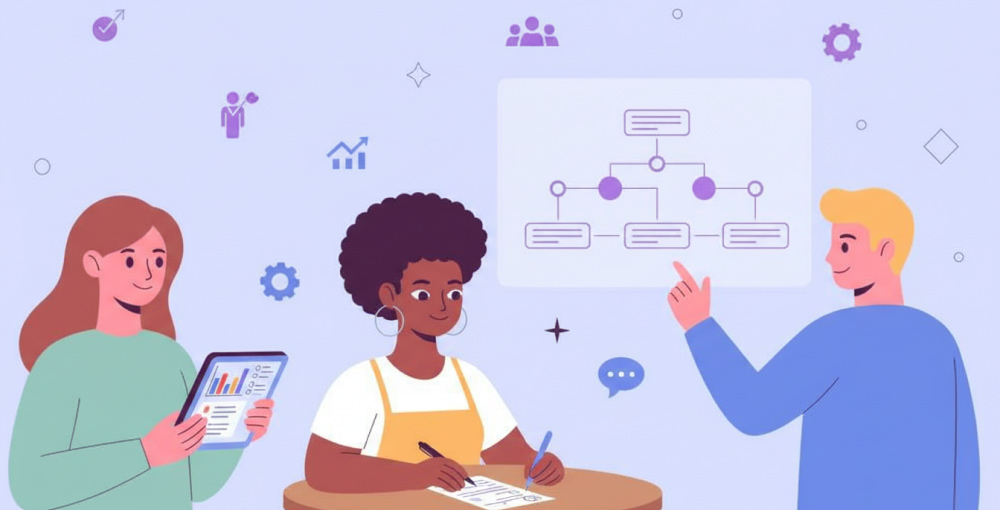A Comprehensive Guide to Evaluating Leadership Capability and Potential

Take Leadership Style Assessment Test
Start the TestWhy Assess Leadership Capabilities in Modern Organizations
Leadership determines speed, clarity, and morale, and it shapes how teams confront ambiguity. A structured evaluation process gives hiring managers and HR partners an evidence-backed way to compare candidates and plan development journeys. Instead of relying on charisma or tenure, data-driven insights reveal how someone makes decisions, influences stakeholders, and maintains ethical standards. This perspective is especially useful when promotions carry high stakes, transformation is underway, or the company is scaling rapidly across regions.
Beyond promotion gates, measurement helps teams diagnose blind spots and quantify strengths that are often invisible in routine meetings. Organizations use a leadership skills test to build consistent benchmarks and translate qualitative impressions into actionable metrics. That clarity reduces bias, increases internal mobility, and fosters transparent career pathways with explicit expectations.
Continuous calibration also matters because roles evolve and market pressures shift quickly. Beyond gut feel, rigorous programs for testing leadership skills support succession planning, guide learning investments, and align performance expectations with real-world complexity. When assessments are integrated with coaching, feedback loops become faster, teams move with confidence, and culture improves through shared language about what great leadership looks like.
How Modern Assessments Work and What They Measure
Contemporary instruments blend psychometrics, behavioral simulations, role-based scenarios, and structured reflections. You can expect a modern leadership skills assessment test to examine judgment, strategic thinking, stakeholder influence, and resilience under time pressure. Reliable tools combine validated scales with situational exercises so the resulting profile represents both potential and observable behavior, not just self-perception.
Communication, a cornerstone of trust and alignment, is often evaluated through realistic prompts that require nuance and empathy. Communication depth is often captured through a leadership communication skills test that probes message clarity, listening fidelity, and audience adaptation across written and spoken formats. To add depth, many providers include feedback rubrics, video responses, and peer perspectives to ensure signal quality.
- Scenario-driven prompts illuminate how candidates prioritize under constraints.
- Behavioral ratings compare actions to defined competency models for fairness.
- Timed challenges reduce overthinking and surface instinctive patterns.
- Reflective items reveal metacognition and growth orientation.
- Aggregate reports translate scores into practical development steps.
Formats, Use-cases, and Choosing the Right Mix
Different formats suit different goals, budgets, and timelines, and the best approach often blends multiple lenses. For distributed teams and global cohorts, an online leadership skills test brings accessibility, scale, and data consistency across time zones. When roles demand broader organizational orchestration, a leadership management skills test can surface planning acumen, delegation skill, and cross-functional decision habits that affect throughput.
To help you compare options at a glance, the table below summarizes common formats, what they tend to measure, and when they are most useful. Match your selection to the stakes of the decision, the maturity of your competency model, and the time you can allocate to participants and reviewers.
| Format | Primary Focus | Best For | Typical Time |
|---|---|---|---|
| Psychometric scales | Traits, drivers, and risk tendencies | Early screening and baseline profiles | 15–30 minutes |
| Scenario simulations | Judgment, prioritization, and trade-offs | Mid-level to senior role readiness | 45–90 minutes |
| Role-play with assessor | Coaching, negotiation, and conflict handling | Customer-facing and people-lead roles | 30–60 minutes |
| Work sample exercise | Planning, metrics, and execution rigor | Project leadership and operational roles | 60–120 minutes |
- Blend short-form instruments for scale with deep dives for finalists.
- Validate against high performers to ensure predictive power is real.
- Update scenarios yearly to reflect strategic changes and new risks.
Interpreting Results and Translating Insights Into Action
Numbers gain value only when they inform better decisions, so reporting should connect scores to the role’s success profile. Data-informed decisions depend on a robust leadership analytical skills test that reveals how a candidate frames problems, interrogates evidence, and communicates trade-offs under uncertainty. Leaders who combine sound analysis with bias-aware habits tend to drive more sustainable outcomes and create learning cultures that replicate good choices.
Balanced development plans target both interpersonal and execution-focused capabilities so growth is durable. Human-centered capabilities are illuminated by a leadership soft skills test that highlights empathy, feedback discipline, and inclusion behaviors that lift team performance. Pair those insights with mentorship, stretch assignments, and explicit goals, and revisit progress quarterly to keep momentum visible and compounding.
- Translate each score into one behavior to start, one to stop, and one to continue.
- Anchor coaching conversations in real scenarios where the behavior matters most.
- Track leading indicators such as cycle time, quality, and engagement trends.
- Share wins to reinforce the value of deliberate practice across the organization.
Best Practices for Candidates and Administrators
Preparation should focus on clarity of thinking, situational awareness, and calm execution rather than memorizing right answers. Technical environments benefit when candidates engage with a leadership technical skills test that mirrors architectural trade-offs, reliability risks, and cross-team dependencies. Practicing concise writing, building structured arguments, and rehearsing stakeholder mapping dramatically improves both speed and fidelity during timed scenarios.
Program owners should optimize logistics, communications, and feedback loops so the experience feels fair and developmental. Budget-conscious teams can confidently pilot a leadership skills test free option to learn which dimensions matter most before investing in enterprise platforms. Whatever you choose, set clear expectations, provide accessibility accommodations, and explain how results will be used to reduce anxiety and increase participation.
- Time-box practice sessions to build pacing and reduce cognitive overload.
- Use rubrics with behavioral anchors to calibrate assessors objectively.
- Provide debriefs that include examples, not just percentile ranks.
- Protect data privacy and communicate retention policies transparently.
FAQ: Common Questions About Leadership Testing
What is the purpose of assessing leadership capability?
Assessments provide evidence for high-stakes decisions, illuminate growth paths, and reduce bias by using consistent criteria. If you want to sample tools without commitments, a reputable free leadership skills test can offer a quick snapshot alongside practical next steps that inform whether deeper diagnostics are warranted.
How do I prepare effectively without gaming the process?
Focus on fundamentals: structure your thinking, clarify goals, and practice communicating trade-offs in realistic scenarios. A short reflection journal after each practice round will improve recall, and it also builds metacognitive habits that transfer into real-world leadership moments.
Are these instruments valid across industries and cultures?
Well-designed tools are validated with diverse samples and regularly re-normed to prevent drift. For more structured diagnostics that respect context, some providers offer a comprehensive free leadership skills assessment test as a trial, and they adapt scenarios to match industry dynamics before enterprise rollout.
What should a good report include beyond raw scores?
Look for role-relevant narratives, behavior examples, and prioritized recommendations tied to measurable outcomes. Actionable reporting will connect insights to a timeline and suggest specific practice routines so managers and coaches can support progress efficiently.
How often should organizations reassess leaders?
Cadence depends on change velocity, but annual check-ins plus post-promotion reviews are common patterns. Add targeted retests after major strategic shifts to ensure the leadership bench remains aligned with the evolving operating model and customer needs.
